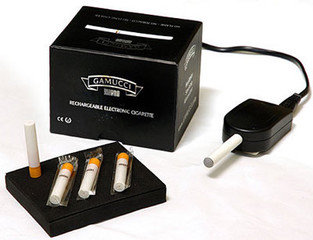This is Scientific American 60 seconds Tech, I'm Larry Greenemeier, got a minute?
这里是科学美国人60秒科技频道,我是拉里·格林梅耶。
O brave new world, that has electronic cigarettes in it.
在这个勇敢的新世界里,总有电子香烟的存在。
Earlier this year, the U.S. Food and Drug Administration said it wants to regulate electronic cigarettes.
今年年初,美国食品和药物管理局决心治理电子香烟,
The agency has even promised to shell out $270 million to 48 research projects for study of the health risks of "vaping".
并计划拿出2亿七千万美元给48个研究机构,用于研究电子香烟存在的安全隐患。
But this effort to get ahead of a possible public health problem might be pointless.
但是,要治理这个公众健康问题,只靠这些努力作用是微乎其微的。

Because even if we learned the risks of tobacco-less e-cigs, some users are modifying these devices to produce stronger flavors, more impressive vapor clouds and to deliver even more nicotine.
原因在于,即便人们知道了无烟草的电子香烟确实存在安全问题,一些使用者还是对电子香烟进行改进,这些香烟与普通香烟相比气味更重,烟雾更多,甚至释放出更多的尼古丁。
Virginia Commonwealth University is using part of their $18.1-million share of the FDA's money to study this e-cigarette hacking.
弗吉尼亚联邦大学作为48所指定研究机构,拿到了1810万元的研究基金。
Of particular concern are modifications that make these devices burn hotter and supposedly produce a larger vapor cloud when exhaled.
研究显示,在电子香烟的种种危害之中,最令人堪忧的就是点燃后过热以及产生过量的烟雾。
E-cigarette fans proudly point out that these devices produce water vapor rather than smoke.
但电子香烟的爱好者却引以为豪地宣称电子烟产生的是水蒸汽而非烟雾。
Scientists, however, want to know what may be carried along with the water vapor—especially when vaping liquids are superheated, possibly emitting formaldehyde and other toxic components.
但科学家更想知道的是伴随着水蒸气释放出来的其他气体还有什么,比如液体过度加热时可能会产生的甲醛等有毒气体。
Why, it's enough to make you question one company's choice of renowned vaccine expert Jenny McCarthy to be their e-cigarette celebrity pitchwoman.
这些足够让你质疑公司令詹尼·麦卡锡担任宣传电子香烟的明星代言这一选择了吧。
Thanks for the minute for the Scientific American 60 Seconds Tech, I'm Larry Greenemeier.
感谢收听科学美国人60秒科技频道。












